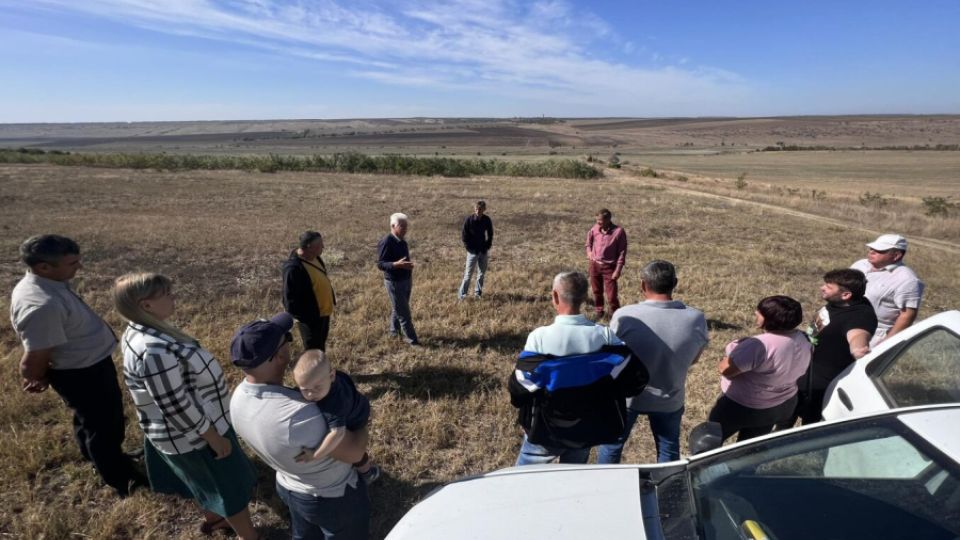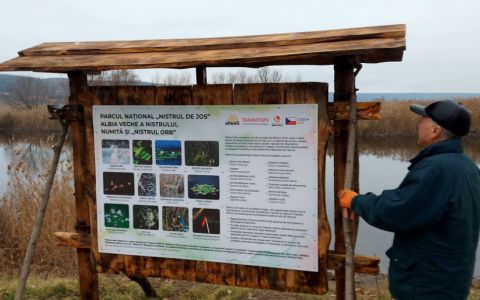Moldova is feeling effects of climate change even more than other European countries. It is experiencing more droughts, and not just because of its geography. Significant deforestation caused by an agricultural intensification and logging is also to blame. Although Moldova's forest cover is only about 11 % of the country's land area, compared to about 38% in the European Union, logging - often illegal - continues. It is driven by a confluence of crises: Russian aggression in neighbouring Ukraine, extremely high inflation and the European energy crisis.
However, further deforestation not only leads to landscape degradation, water scarcity and soil erosion, but paradoxically threatens to reduce yields for the majority of Moldovans who work in agriculture, thus further worsening the economic situation in rural areas.
One possible solution to this situation is to limit erosion and improve water retention in the landscape by planting green belts along fields or dividing field blocks into smaller parts separated by tree lines, shrubs, windbreaks and, in general, living greenery. However, this approach has not yet been widely adopted and farmers fear that they will lose part of their harvest by reserving a portion of the land for green belts.
But the opposite can be true - planting and dividing fields into smaller units not only helps retain water, reducing soil desiccation and wind (and eventually water) erosion, but also protects a fertile topsoil. Which is now being washed away: it is estimated that the whole of Moldova is losing up to 10-15 million m3 of arable land each year. So this, in turn, could increase yields - not to mention improve the ecosystem function of the landscape, including enhanced biodiversity.
Arnika and its local partner organisation Biotica therefore decided to raise awareness not only among the general Moldovan public, but also within the state authorities. As it turned out, the problem in Moldova is not in the insufficient legislation (although, unlike in neighbouring Romania, there is not yet a legal framework to support the planting of green belts) and apparently not even the lack of funds for planting (such as those available for eample from the International Fund for Agricultural Development - IFAD), but rather the lack of a national system of creation, maintenance and monitoring of those forest belts, which also leads to the lack of awareness and goodwill for implementation, since this also requires land to be made available, particularly by communities or farmers who use the land for grazing.
As part of our joint project, funded by the Czech Ministry of Foreign Affairs' Transition Programme, we held a press conference in May 2023 with the participation of experts and practitioners. We also presented the idea of green belts in the media, at universities and at meetings with other NGOs.
Vasile Țînțar, the mayor of Copceac village, and Vasile Mereuță, a farmer, presented their experience with the green belts during the launch of a public campaign for the planting of greenery within agricultural parcels organised by Biotica in Chisinau. We wanted to show some positive examples of Moldovan communities or farmers who are already using this approach and could stimulate the interest of others. So, we organised excursions for the public, and especially for farmers, to places where they already have green strips along their fields and where they confirm higher agricultural yields: such as Balti in the north of the country, or Copceac in the south, near the Lower Dniester National Park.
Our longer-term goal is then to pass legislation to legally anchor the planting of green belts in Moldova, thereby initiating the desired change. This could be linked to the National Programme for the Expansion and Rehabilitation of Forests in the Period 2023-2032, which, once approved by the Moldovan government in February 2023 and with the support of a number of foreign donors, envisages the expansion of forested areas by 150,000 hectares on state and private land.








